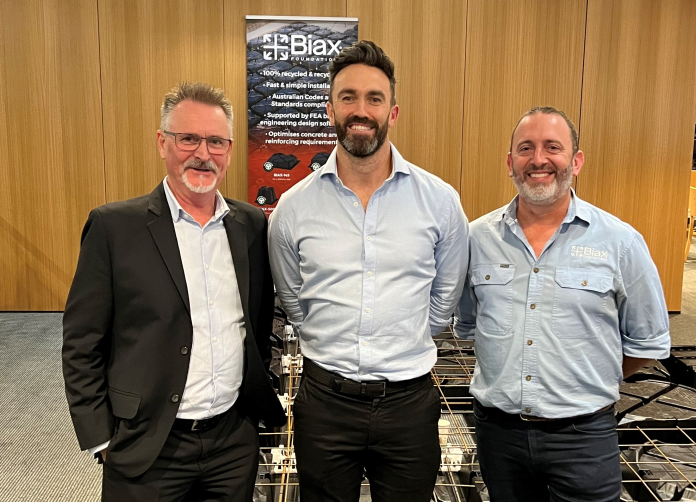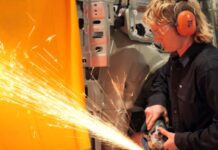
Media Release By Holloway Group
The days of using polystyrene pods in residential foundations are numbered, and the construction sector is getting on board with a move to more sustainable options for waffle pod slabs, with some of the sector’s leading builders and engineering consultants throwing their support behind Biax, a revolutionary new product.
Jim Prior, COO of Holloway Group, which manufactures Biax, says the Australian-made product represents a clever re-thinking of the waffle pod and has the support of leading home builders and engineering firms.
A crowd of builders, engineers and other industry representatives gave the product a resounding thumbs up when they had the opportunity to see it for themselves at an event hosted by Biax and AusReo last week. Among participants at the showcase event were builder JG King, which has committed to using Biax for new residential builds, and Intrax Consulting Engineers, who put the product through exhaustive testing before giving it their endorsement.
Jim says builders recognise the need to move on from polystyrene.
“Polystyrene pods do what they are designed to do in a foundation, but there are so many downsides. The system served its purpose in providing a very reliable, proven, cost-effective base for building residential dwellings, but every builder and concreter knows that the polystyrene pods are a problem. They take up a huge amount of space on sites that are only getting smaller, they’re unsightly and they inevitably end up creating a mess throughout neighbourhoods when they break up with the slightest wind, resulting in pieces spreading to nearby properties or into waterways.”
While there have been admirable moves to ensure polystyrene offcuts are recycled, Jim says it’s well known in the industry that this does not always happen.
“Recycling polystyrene is very difficult under the best of circumstances, and scrap collected from site is often heavily contaminated with mud, dirt and concrete, so unfortunately, if it hasn’t already blown down the street, it ends up in the bin.”
An alternative that meets engineering specs
Finding an alternative is something the industry has been working on for a long time, but Jim says the products weren’t right, and the timing wasn’t right.
“It’s understandably difficult for engineers and builders to move away from a system they know is fundamentally reliable. While it clearly has flaws, when an engineer specifies a foam-filled waffle pod, they know it’s going to perform as expected and comply with all the relevant building codes. The trouble with some of the earlier products that tried to replace foam was that they threw the baby out with the bathwater, relying on an entirely different foundation design.
“Biax retains everything that is good about the waffle pod slab but replaces the foam with a product that is made of recycled and recyclable material. It’s stackable, so it’s easier to transport and easier to store on site, and it’s priced comparably. Rather than simply replicating the same sizes as waffle pods, the Biax sizes are specifically calculated to also offer heightened engineering outcomes.”
Jim notes that the building industry is under increasing pressure to adopt sustainable practices, with councils like Melton in Victoria actively fining builders who do not appropriately secure the pods, which the council describes as a major litter issue.
“Social licence to operate is becoming more of a focus area for builders, who face mounting scrutiny over their commitment to sustainability. There will come a point, probably soon, where environmentally unsustainable components like polystyrene will simply become unacceptable.”
Image Credit: www.hollowaygroup.com.au




















